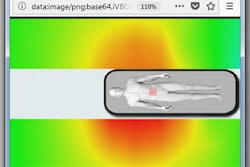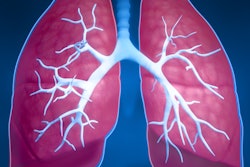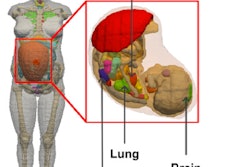
A relatively large U.K. study has provided fresh evidence that CT pulmonary angiograms (CTPAs) result in positive outcomes when diagnosing pulmonary embolism (PE) in pregnant women, for whom the incidence of venous thromboembolism is four times greater than in the nonpregnant population.
Pregnant women are at particularly high risk from the effects of radiation, so the reluctance of radiologists to use CT is understandable. Breast tissue is more sensitive to the effects of radiation, and pregnant women live long enough to manifest the long-term effects of radiation.
According to the American Thoracic Society, the prevalence of PE in pregnant women presenting with suspicious signs and symptoms ranges from 3% to 6%, and PE is an important and potentially fatal disease that is predisposed in pregnant women with an estimated incidence of 10.6 per 100,000.
When it comes to how many CT scans are positive for pulmonary embolism during pregnancy, the literature is limited.
Two tests are used to diagnose pulmonary embolism: CTPAs and ventilation/perfusion (V/Q) scans. CTPA gives a lower dose to the fetus but a higher dose to the mother, according to Dr. Dilip Oswal, a consultant radiologist at Mid Yorkshire Hospitals National Health Service (NHS) Trust in Wakefield, U.K., and colleagues. However, a V/Q scan is the opposite: It gives a higher dose to the fetus and lower dose to the mother. There's also the use of contrast medium for CTPA to consider (i.e., iodine allergy, renal function, effects on fetal thyroid function, etc.).
In possibly the largest study in terms of duration -- five years, 2009-2013 -- and the number of cases (269) in assessing the positivity yield of CTPA during pregnancy, the researchers found the overall positivity yield for pulmonary embolism was five out of 269 cases, or 1.9%. They also found a marked increase in the number of CTPA scans between 2010 and 2012 -- all five positive scans were in the year 2012, the researchers wrote in an e-poster presented at the European Society of Thoracic Imaging (ESTI) 2014 meeting held in Amsterdam in June.
Only two scans were nondiagnostic (0.75%). Thirteen scans were reported as suboptimal (5%), but the reporting radiologist had made a confident diagnosis of presence or absence of PE anyway.
The researchers found minor incidental and additional findings in 28 cases (10%), including atelectasis, pleural effusions, cardiomegaly, and consolidation. Two cases negative for PE had significant findings. One patient had an aberrant origin of the right coronary artery, which could account for the presentation of the chest pain because of its course, and another patient had multifocal bilateral pulmonary consolidations (likely vasculitis) that could explain the presentation, Oswal and colleagues stated.
In the five patients with PE, the radiation dose was recorded as dose length product (DLP) in mGy·cm and then converted to an effective dose using a conversion factor of 0.014. Effective radiation dose was 0.59 mSv to 7.5 mSv with a mean of 2.2 mSv.
"Each patient is also expected to have an ultrasound scan of both legs for diagnosis of DVT [deep vein thrombosis] even if they did not have clinical presentation of DVT," they wrote. "DVT and PE are part of the same venous thromboembolism process and this step helps in reducing radiation exposure."
If a patient was positive for DVT, she was treated for venous thromboembolism without the need for a CTPA scan; a total of 37 patients did not have ultrasound scan for DVT (14%).
Limitations
A limitation of the study is its retrospective nature -- the researchers acknowledged a prospective study would be better.
"Each patient presenting with a suspected diagnosis of VTE should be included and variables analyzed," they wrote. Questions to address in the future include: How many chest x-rays provided alternative diagnosis and patients did not need any more tests? How many patients had a positive ultrasound for DVT and did not need CTPA? How many patients went in for a V/Q scans?
Another limitation is the study didn't include postpartum patients -- women in the first six weeks after delivery are at a higher risk of venous thromboembolism and should be analyzed separately.
The researchers encourage other centers to analyze their own results and produce a larger series so that a more accurate benchmark for yield of CTPA scans during pregnancy can be established.



















